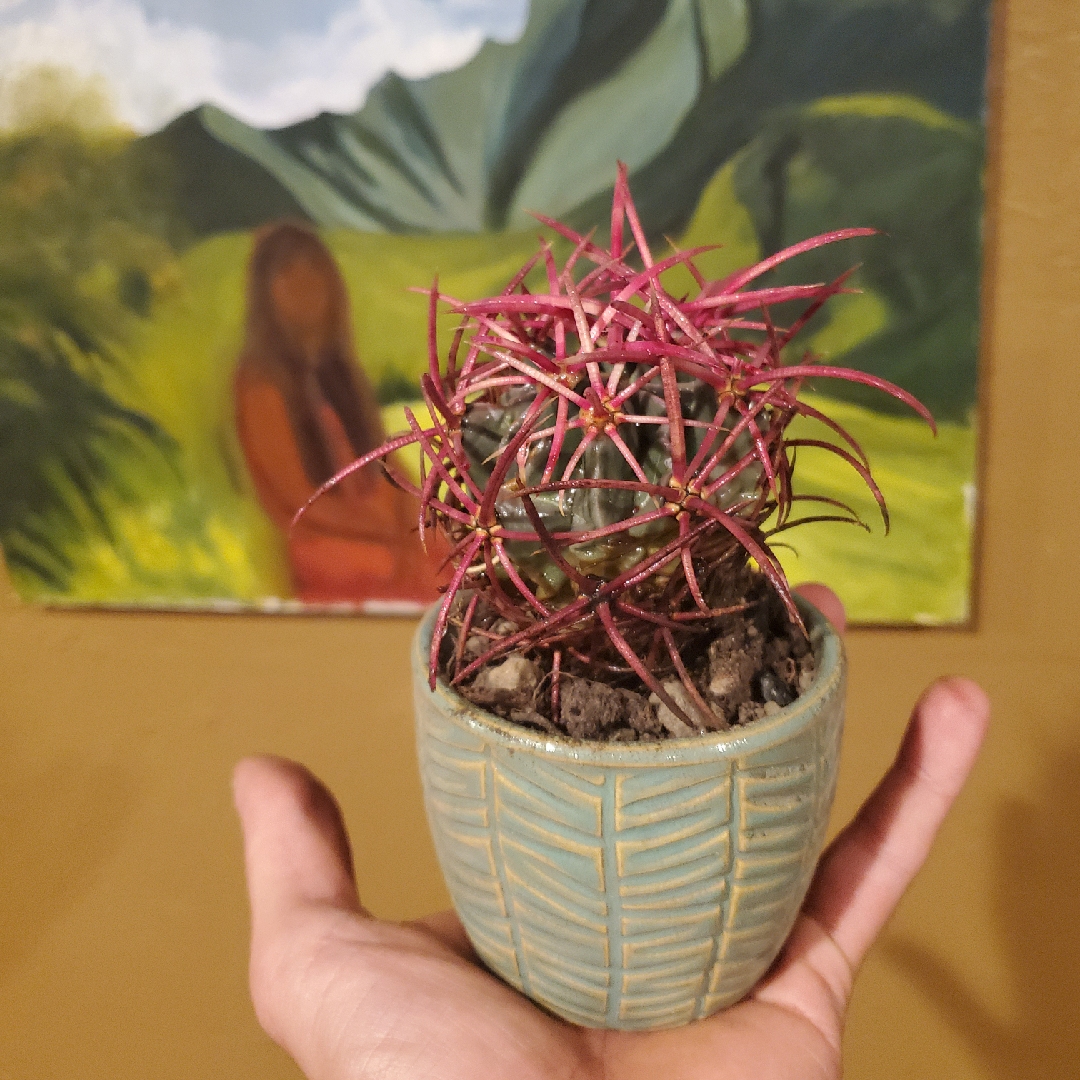
Echinocactus polycephalus
Cottontop Cactus
The small genus of Echinocactus now includes only 6 species. The genus Echinocactus include any plants that are barrel shaped, ribbed, and not already included in Cereus or Melocactus. Echinocactus do have several traits in common. They grow a thick, fuzzy wool at the apex where the flowers grow from in mature plants. This can be a wide, flat area covering almost the entire top of the plant in E. grusonii and E. platyacanthus or very limited and hardly noticeable as in E. texensis. Other similarities in this genus include an overall barrel shape and well-defined ribs. All species have robust spines and produce yellow or pink funnel shaped flowers.
-
Full sun
-
Very little water
-
Not Frost hardy
-
Light and free draining
Common name
Cottontop Cactus
Latin name
Echinocactus polycephalus
type
Succulent
family
Cactaceae
ph
5.0 - 7.0 Acid - Neutral
Plant & bloom calendar
-
Best time to plant
-
When the plant will bloom
full grown dimensions
 0.50 M
1.00 M
0.50 M
1.00 M
Echinocactus polycephalus
The small genus of Echinocactus now includes only 6 species. The genus Echinocactus include any plants that are barrel shaped, ribbed, and not already included in Cereus or Melocactus. Echinocactus do have several traits in common. They grow a thick, fuzzy wool at the apex where the flowers grow from in mature plants. This can be a wide, flat area covering almost the entire top of the plant in E. grusonii and E. platyacanthus or very limited and hardly noticeable as in E. texensis. Other similarities in this genus include an overall barrel shape and well-defined ribs. All species have robust spines and produce yellow or pink funnel shaped flowers.
Flowering Season
From Late Spring TO Late Spring
This species is unlikely to flower in cultivation however, it may produce tubular yellow flowers in late spring in a circle on the crown of old and large plants.
Planting young plants
From Early Spring TO Early Spring
These are most likely to be sourced as young plants and they should be grown in an open compost of 1 part sand to 2 parts of potting compost number 2. Place in full sunlight in the greenhouse








